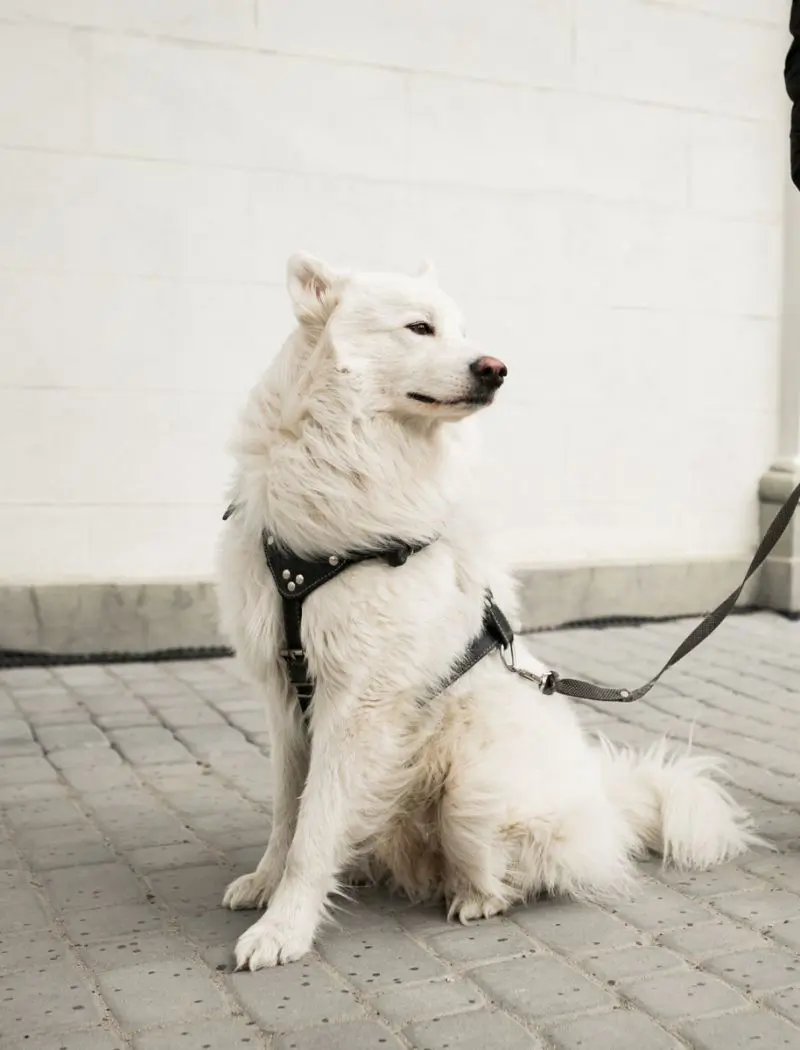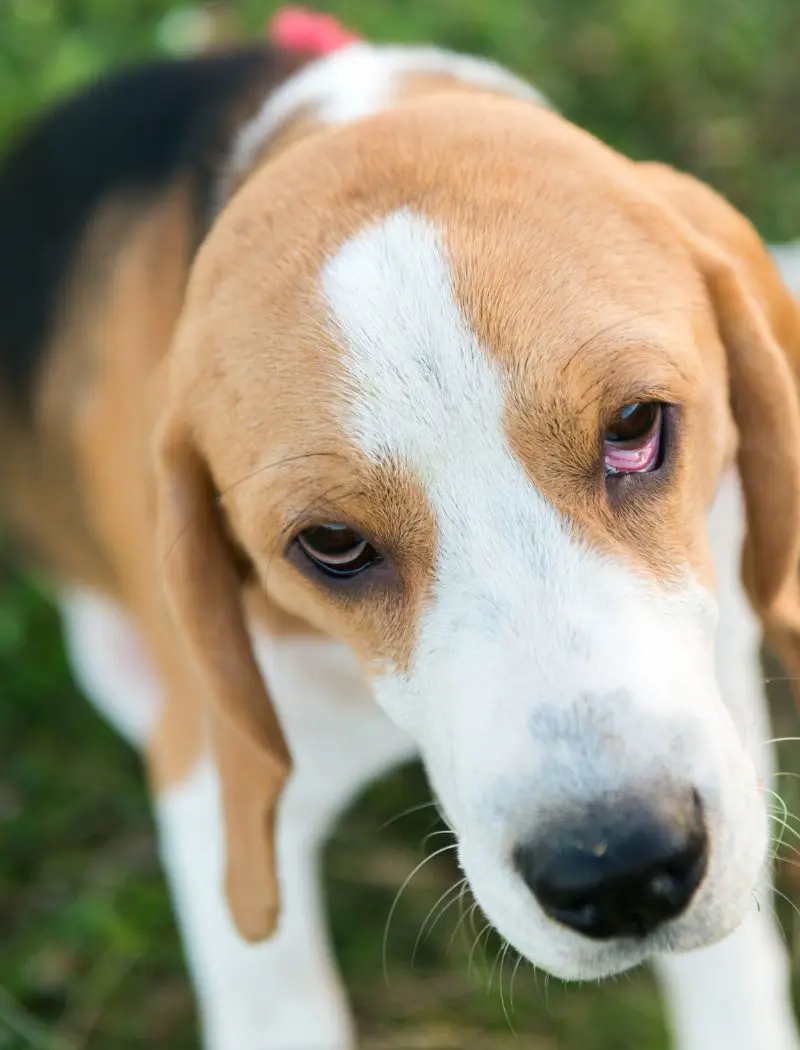17 Signs Of Dog Yeast Infection

Being a dog owner, you never want to see your dog suffer but what if they are suffering from some infections? Dog yeast infection is a common type of skin condition that is caused by the overgrowth of yeast, typically the "Malassezia Species".
It can occur on different parts of the body and lead to itching, red, inflamed skin, odor, oily skin, hair loss, and so on. It can make your dog's life difficult and ugly. So let's find 17 signs of dog yeast infection which will help you to realise the problem sooner.
1. Itching
One of the common signs of yeast infection in your dogs can be the sign of itching. When your dogs are infected, it often starts with intense itching around the affected area. It can come and go, however it is hard to ignore and irritates.
The skin of your dog's affected area can be swollen and irritated causing them uncomfortable and the urge to itch. The yeast will grow in the infected area and cause irritation and inflammation.
Some of the common areas of itching can be ears, paws, skin folds, armpits, and many more. If you notice, that your dogs are scratching excessively and rubbing their body against something, you should look after their condition as soon as possible.
2. Redness
Redness also known as erythema is a skin condition when your dog's skin turns red because of various reasons among which infection is also one. It is often a sign of inflammation or irritation that is caused by different skin problems.
If the yeast grows in the dog's body, they trigger their skin causing them to be red and irritated. Their attempt to scratch the affected area worsens the redness and bothers the skin more.
Usually, the area has small red spots and feel swollen or warm, but they can also appear as large patches if the condition is severe. It is one of the key signs of your dog's problem, so you need to take them to a vet if you notice them in your dogs.
3. Greasy Coat

The yeast infection can encourage the oil-producing glands in the dog's skin to produce more oil which can lead to their greasy coat. This not only makes your dog look untidy, but they will feel irritated as well.
Inflammation caused by the infection on can affect the normal balance of oil production in their skin and make their coat more oily than usual. Yeast also flourishes more in the oily environment making them the perfect place to grow and worsen the condition.
Some of the common signs of a greasy coat are oily texture, unpleasant smell, dull appearance, and many more. If you see their greasy coat are not cleared despite several baths, you need to consult an expert.
4. Musty Odor
If you notice your dog is giving out a musty odor, then it may be a sign that your dog suffering from this infection. The yeasts have a sour, stinking smell that many dog owners explain as similar to old, damp socks.
The odor can get worse if the fungi overgrow which can lead to a more unpleasant situation. They can grow in warm, moist environments and when there is excessive production in the dog's body.
You can commonly smell the musty odor formm their ears, paws, skin folds, armpits, and underbelly. You can try using medicated shampoos, dietary changes, and antifungal medications according to your dog's condition.
5. Ear Infection
Ear infections are mostly seen in those breeds which have floppy and infected ears. They suffer a lot if the natural balance of micro organisms in their ears is disturbed, which will lea to inflammation and discomfort.
When there is excessive moisture in their ears that can be caused by swimming or bathing, it creates a perfect place for the fungi to grow and develop. Some food or environment allergies can also trigger this condition by disturbing their ear's natural balance.
If your dogs have other skin conditions also, they are more likely to get infected. If your dogs have floppy ears, they can trap moisture and warmth which can worsen the condition, so you need to be more careful.
6. Hair Loss

Hair loss in dogs is known as alopecia which can be because of several skin conditions among which being infected by the yeast is also one. The loss of their hair can often be caused by skin irritation and inflammation.
This can lead to eventual hair loss in the affected area of the body. The constant irritation and discomfort in their body can cause trauma to their skin and cause the hair to fall out. The itchiness and build-up of oil can damage their hair condition and make the hair loss worse.
It is very important for you to consider their condition and help them to maintain good hygiene, and regular vet visits and try to find the underlying cause for that.
7. Discolored Skin
Discolored skin in dogs is a noticeable sign of them being infected, and suffering from chronic irritation. The skin color of the dogs can be changed because of the pressure of the yeast in their body for a long time, which affects the normal color of their skin.
Inflamed skin, often scratching, liking, or biting can cause hyperpigmentation in your dogs, leaving them with dark discolored patches. The skin appears to be more darker or uneven in tone and sometimes, the healing process can also lead to discoloration.
The common types of skin discoloration can be darker patches, red or reddish-brown, purple or blue tint. These can be because of poor circulation, deeper tissue damage, irritation, and the overgrowth of the bacteria.
8. Licking Paws
Licking paws is a common behavior in dogs but if they are liking them excessively, it can be because of discomfort or irritation. This can be also a sign of them suffering from the yeast infection.
These fungi mostly overgrow in the moist areas between the dog's toes, which cause them irritation. In order to minimize their discomfort, they often lick their paws so that they can feel better.
However, they can also lick their paws if they are suffering from allergies, injury, pain, dry skin, or other parasites or bacterial inflammations. If you find your dogs licking their paws a lot, you need to find its root cause to make them feel better.
9. Shaking Head

Shaking head is often a sign of discomfort or irritation in the head, especially in the ears. If they are suffering from infections in their head parts where they cannot lick or scratch directly, they often shake their head to try to reduce the uneasiness.
The infection can lead to severe itching, discomfort, swollen, which can lead them to shake their head. This can also be because of the thick, dark, waxy discharge in their ear, which can make them feel uncomfortable, often leading to shaking.
If your dogs often shake their head, it may be because of some serious problem and they need veterinary attention. You can make them feel relief by providing several medications, an accurate diagnosis, and a treatment plan.
10. Ear Discharge
Ear discharge in dogs can be one of the signs because of the fungi. The discharge can be dark brown or black which is thick, waxy, or greasy, along with a musty or sour odor.
If your dog's ear discharge is accompanied by a color change and swelling around the ear canal, severe head shaking, scratching or rubbing, and pain, then they may be suffering from a serious yeast infection that requires more attention.
You should take your dogs for an examination, often clean their ear, and treat them with medications and drops. Maintaining hygiene and keeping the ears clean and dry is also important for their ear health.
11. Raised Bumps
Raised bumps are the slight rise of the dog's skin which can be of various sizes and colors, that can be caused due to skin irritation. These bumps can differ in appearance and location, depending on the infection and the time they have been present.
They can be small, red bumps where there is irritation and inflammation. If they are facing from serious one, the bumps can be converted into lumps or more larger and solid. They can be tender, warm, and painful when touched.
These bumps are often between the toes, armpits, underbelly, or around the ears. If there are a lot of raised bumps in the body of your dog, then that can be a serious problem so you should consult with the experts as soon as possible.
12. Difficulty Walking

Difficulty in walking can be a sign of severe infection that needs your attention as soon as possible. When your dogs are suffering from a lot of discomfort and pain especially around their paws or limbs because of the fungi problem, they have difficulty walking.
While the infection itself doesn't cause a direct problem in their walking ways, however when they are suffering from painful paws, uncomfortable toes, swelling, and itchiness, they will have problems moving freely.
This can also cause intense pain and inflammation leading to sensitivity in their paws. If you see your dogs limping accompanied by other symptoms, you should take them to see their veterinarian and try to find the underlying cause.
13. Swelling
Swelling in your dogs can occur when they have unusual skin conditions. This can happen in specific areas, like paws, and ears, and can cause uneasiness and affect their normal behavior.
It is an abnormal enlargement in the body part of your dog especially caused by the infection. The swelling can be irritating and painful and often makes it hard to use the swollen area.
The swollen area is often raised along with the change in a normal tone of the skin, warm to the touch, and sometimes they can also discharge thick, dark, or greasy fluid if the condition becomes worse. It is important to groom your dogs regularly, control the moisture, and have regular checkups to prevent them from swelling.
14. Ulcers
Ulcers are the break in the skin of your dog with the loss of the surface tissues that prevents the part from functioning normally. It can be developed because of irritation and can be painful and problematic.
They are open, raw areas of skin and often appear red, inflamed, and moist. Your dogs can develop ulcers in different body parts like between toes, skin folds, ears, etc which may have been caused due to scratching, moisture, and irritations.
This can cause your dog to be in pain and be more sensitive to touch or handling. This can also discharge yellowish liquid mixed with that giving a foul smell. This can be the result of excessive scratching, liking, and damaging the normal skin of your dogs.
15. Excessive Drooling

Although this type of problem directly affects the skin, ears, and paws of your dogs, it can still indirectly lead your dogs to excessive drooling if they cause discomfort in or around the mouth area. This can also be the result of licking the irritated area a lot.
Some of the common reasons are oral or throat yeast infection, liking their paws, skin folds too much causing their mouth to be affected. It tries to cope with the discomfort through drooling and sometimes this can also be the response to the stress.
Besides this, its other reasons can be dental problems, foreign objects, nausea, heat stroke, allergic reactions, toxic ingestions, and many more. If you find it is becoming a problem, you should take them to the clinic or hospital.
16. Loss Of Appetite
Although the problem doesn't affect the appetite of your dogs directly, it can still indirectly affect their eating behavior because of uneasiness, stress, or irritation. When they are suffering from pain, they will lose their interest in food.
The infection can also lead to nausea, dizziness, and overall discomfort which may reduce their appetite. Oral or throat pain can also affect their eating as it can pain while swallowing or chewing their food.
Other reasons can be digestive issues, dental problems, or illness, which can make them lose their appetite. You need to address the main causes and treat them accordingly according to the prescription.
17. Behavioral Change
The yeast infection can ultimately lead to a behavioral change in your dogs as a result of the above-mentioned symptoms. This can be because of the pain, anxiety, and difficulty in different parts of their body.
When they are suffering from it, they can have a negative reaction towards touching, especially in the affected area. They will not have much energy and feel tired and lazy, avoiding physical activities. They may become restless and more aggressive due to the irritation.
If you notice the behavioral change in your dogs accompanied by various other signs, you should take them to see the veterinarian as soon as possible so that they will not suffer more. It is very important to monitor them properly in such situations.
Recent posts
Dogs
What Are Dogs Afraid Of? 10 Common Dog Fears And Phobias
Becoming a dog owner comes with certain responsibilities, including identifying their fears and phobias. From an unpleasant sound to an unfamiliar scent, many factors can trigger a fear response. Understanding a dog's psychology can be complicated; a...
How To Put A Dog Harness On: Step By Step
A dog harness is a popular and safe alternative to a neckband that is designed to distribute pressure more equally across the structure while walking or running. They are worn around the chest and torso, making them a comfortable option for many dogs...
15 Webbed Feet Dogs Breeds That Can Swim
Dogs often become excited when they are near a water body like a pool, river, or beach. Unlike cats, canines are not wary of water and are usually seen enjoying their swims at their nearby water hole. However, enthusiasm alone doesn't dictate a dog's...
20 Fun Activities For Dogs During Winter
Winter can be a great time to embrace the chilly season with creative activities that keep your furry friend happy and entertained. They provide a perfect opportunity to explore unique ways to bond with your dog. From snowy outdoor experiences to coz...
How To Introduce Baby To Dog: A Step By Step Guide
Adding a new baby to your home is exciting, but it can also be a big change for your dog. A dog's natural curiosity involves a patient, prepared, and considerate introduction to a newborn baby. A smooth transition is important for the safety of your ...
Do Dogs Cry? What Does Their Tears Mean
Dogs are known to shed tears as a way to lubricate their eyes and not because of sadness or emotional pain like humans. Tears in dogs may indicate medical issues like eye infections or blocked tear ducts that may cause discomfort to them. It is very ...





